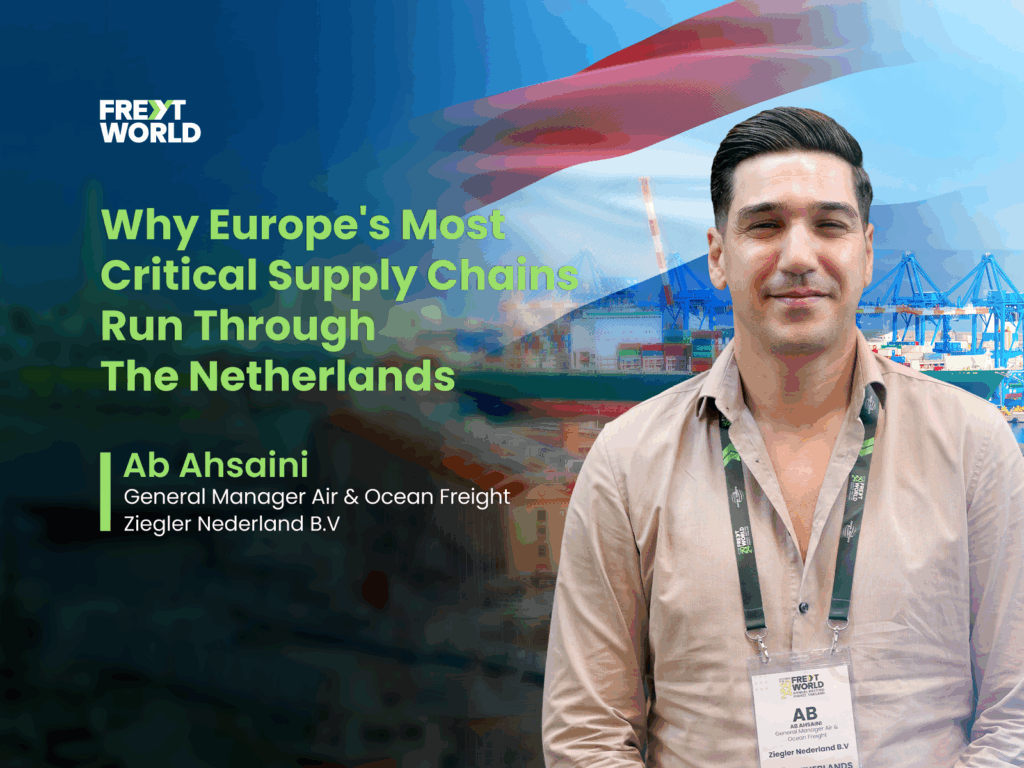By Wuthichai Sachdev, Managing Director of Atlas Line Co., Ltd, Thailand

In global trade, Southeast Asia has emerged as a powerhouse of production, consumption, and innovation. At the very center of this dynamic region lies Thailand, a nation historically celebrated as a strategic crossroads. Today, Thailand is not just a crossroads; it is engineering its transformation into the definitive logistics and economic hub of the ASEAN bloc. The catalyst for this monumental shift? A multi-billion-dollar initiative known as the Eastern Economic Corridor (EEC).
For any business with a stake in Asia, from multinational manufacturers to nimble e-commerce sellers, understanding the EEC is no longer optional. It represents one of the most significant supply chain developments of the decade. But what does it mean on the ground? How can businesses navigate its complexities and harness its immense potential? To answer these, we turn to a local expert with a global perspective: Wuthichai, the leader of Atlas Line Co, in Bangkok.
The Strategic Imperative: Why Thailand?
Before diving into the specifics of the EEC, it's crucial to understand Thailand's inherent geographical and economic advantages. Situated centrally within mainland Southeast Asia, it shares borders with Malaysia, Cambodia, Laos, and Myanmar, offering unparalleled land-based access to a market of over 680 million people.
“For decades, Thailand has been a linchpin for supply chains, particularly in the automotive and electronics sectors,” explains Wuthichai. “We have established infrastructure, a skilled workforce, and a pro-investment government. The EEC isn't about starting from scratch; it's about building a world-class superstructure on an already solid foundation. It's a deliberate, strategic leap to secure Thailand's role as the central nervous system for regional trade.”
This "leap" aims to move the country beyond being a manufacturing base and into a hub for advanced industries, R&D. Most importantly, it seeks to establish the nation as a nexus for multimodal logistics connecting the Indian and Pacific Oceans.
The Game-Changer: A Deep Dive into the Eastern Economic Corridor (EEC)
The Eastern Economic Corridor is a sprawling development project spanning three coastal provinces to the east of Bangkok: Chachoengsao, Chonburi, and Rayong. It's not merely a collection of industrial estates; it's a comprehensively planned economic zone designed to be a beacon for foreign investment and high-tech industries.
The project rests on three monumental infrastructure pillars designed to work in synergy:
1. Upgrading the Maritime Gateway: Laem Chabang Port Phase 3 Laem Chabang is already one of the world's busiest container ports. The EEC's Phase 3 expansion is a colossal undertaking set to increase its annual container throughput capacity from 11 million TEUs (Twenty-foot Equivalent Units) to 18 million TEUs.
“The expansion of Laem Chabang is the maritime heart of the EEC,” Wuthichai notes. “It’s not just about more capacity. It's about efficiency. We're seeing major investments in automation, gantry cranes, and port management systems. For our clients, this translates directly to faster vessel turnaround times, reduced congestion, and more reliable shipping schedules. It will solidify its status as the primary gateway to the ASEAN market.”
2. Creating an Aerotropolis: U-Tapao International Airport The EEC envisions transforming U-Tapao Airport, a former military airbase, into a major international aviation hub seamlessly linked to Bangkok's two existing international airports, Suvarnabhumi and Don Mueang. The plan includes a third passenger terminal, a new runway, a massive cargo and maintenance facility (MRO), and an "Airport City" (Aerotropolis).
This development is critical for high-value and time-sensitive goods. "For electronics, pharmaceuticals, and high-end e-commerce, air freight is essential," says Wuthichai. "The development of U-Tapao as a dedicated cargo hub, integrated with the nearby seaports and industrial zones, will create a powerful sea-air logistics model that can drastically cut transit times for goods moving between Asia, Europe, and the Middle East."
3. The Missing Link: High-Speed Rail Connectivity Perhaps the most ambitious component is the high-speed rail line connecting U-Tapao, Suvarnabhumi, and Don Mueang airports. This project will not only facilitate passenger movement but will be the backbone connecting the EEC's various economic and logistical nodes. Furthermore, it is planned to eventually link with China's Belt and Road Initiative (BRI) rail network via Laos, creating an unprecedented land bridge from Southern China through Thailand to the sea.
Wuthichai emphasizes the long-term vision: "Imagine assembling goods in a factory in Rayong, moving them via a dual-track railway to Laem Chabang for sea export, while simultaneously flying in critical components through U-Tapao. The high-speed rail is the artery that makes this integrated system pump efficiently. This level of connectivity is what will set Thailand apart."
Seizing the Opportunity: Key Industries and Real-World Impact
The Thai government is targeting twelve S-curve industries within the EEC, including next-generation automotive (electric vehicles), smart electronics, medical and wellness tourism, advanced agriculture, and robotics. This focus creates immense opportunities for businesses in these sectors.
"We are already seeing a shift," Wuthichai reports. "Clients who traditionally focused on standard automotive parts are now asking about the logistics of handling EV batteries, which have entirely different safety and handling requirements. E-commerce platforms are looking to establish fulfillment centers within the EEC to leverage the superior connectivity for faster regional distribution."
The opportunity lies in leveraging the EEC's ecosystem. A company can manufacture, conduct R&D, and manage its entire regional supply chain from a single, hyper-connected zone. The incentives are also compelling, with tax holidays of up to 13 years, streamlined customs procedures, and the right to own land for foreign investors.
Navigating the Hurdles: The On-the-Ground Realities
While the vision for the EEC is grand, its implementation is a complex, multi-year process. Global businesses looking to capitalize on this opportunity must be aware of the on-the-ground challenges.
1. Customs and Regulatory Nuances: While the EEC offers a more streamlined process, Thailand's customs regulations can still be intricate. Each targeted industry has specific import/export codes and requirements. "A simple misclassification of a product can lead to significant delays and penalties," Wuthichai cautions. "This is where deep, local knowledge is invaluable. Understanding not just the letter of the law, but its practical application, is key."
2. Infrastructure Integration: The various infrastructure projects are in different stages of completion. Navigating the logistics landscape requires a partner who understands the current state of development, knows which routes are most efficient today, and can plan for the capabilities that will come online tomorrow.
3. Last-Mile and First-Mile Connectivity: While the mega-projects are impressive, the efficiency of a supply chain often comes down to the first and last mile, getting goods from the factory to the port or from the airport to the distribution center. This requires a robust network of trucking and domestic transport providers.
Your Partner in a New Era: The Atlas Line & Freyt World Advantage
This is precisely where the expertise of a seasoned freight forwarder like Atlas Line Co., Ltd., backed by the global network of Freyt World, becomes a critical competitive advantage.
"Our role is to be our clients' strategic guide to the EEC," Wuthichai states with confidence. "We don't just move boxes; we architect solutions. We help clients navigate the regulatory landscape, advise them on the optimal location for their operations within the EEC based on their specific logistics needs, and manage their entire supply chain, from factory floor to final destination."
By combining Atlas Line's local mastery of the Thai market with Freyt World's global standards, technology, and network, clients get the best of both worlds: a partner with deep-rooted connections and an understanding of local customs, who operates with the transparency and reach of a world-class logistics network.
The Future is in the East
Thailand's Eastern Economic Corridor is more than an infrastructure project; it is a bold declaration of intent. It is the country's bid to become the undisputed economic and logistical heart of a thriving ASEAN region. The opportunities for growth, efficiency, and supply chain optimization are immense.
However, realizing this potential requires more than just capital; it requires expertise. Navigating this new frontier demands a partner who understands the vision, anticipates the challenges, and possesses the on-the-ground capability to turn strategy into success. As Thailand builds the future of ASEAN logistics, having an expert like Wuthichai and the Atlas Line team in your corner is the key to unlocking it.

Freyt World Blog Contributor
Freyt World is a global logistics network uniting members from around the world. Our mission is to revolutionize global logistics through collaboration and innovation. Our platform goes beyond networking, enabling members to excel and grow together, featuring articles by logistics professionals for their peers. This series will cover industry-relevant issues and news, providing valuable insights for professionals in the field.

